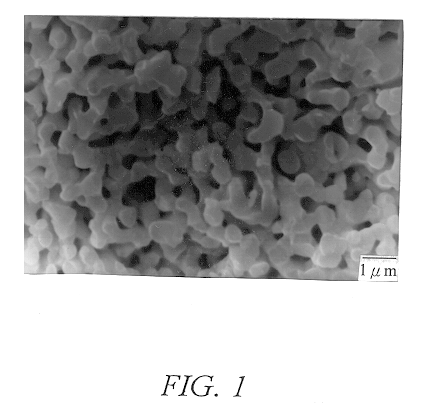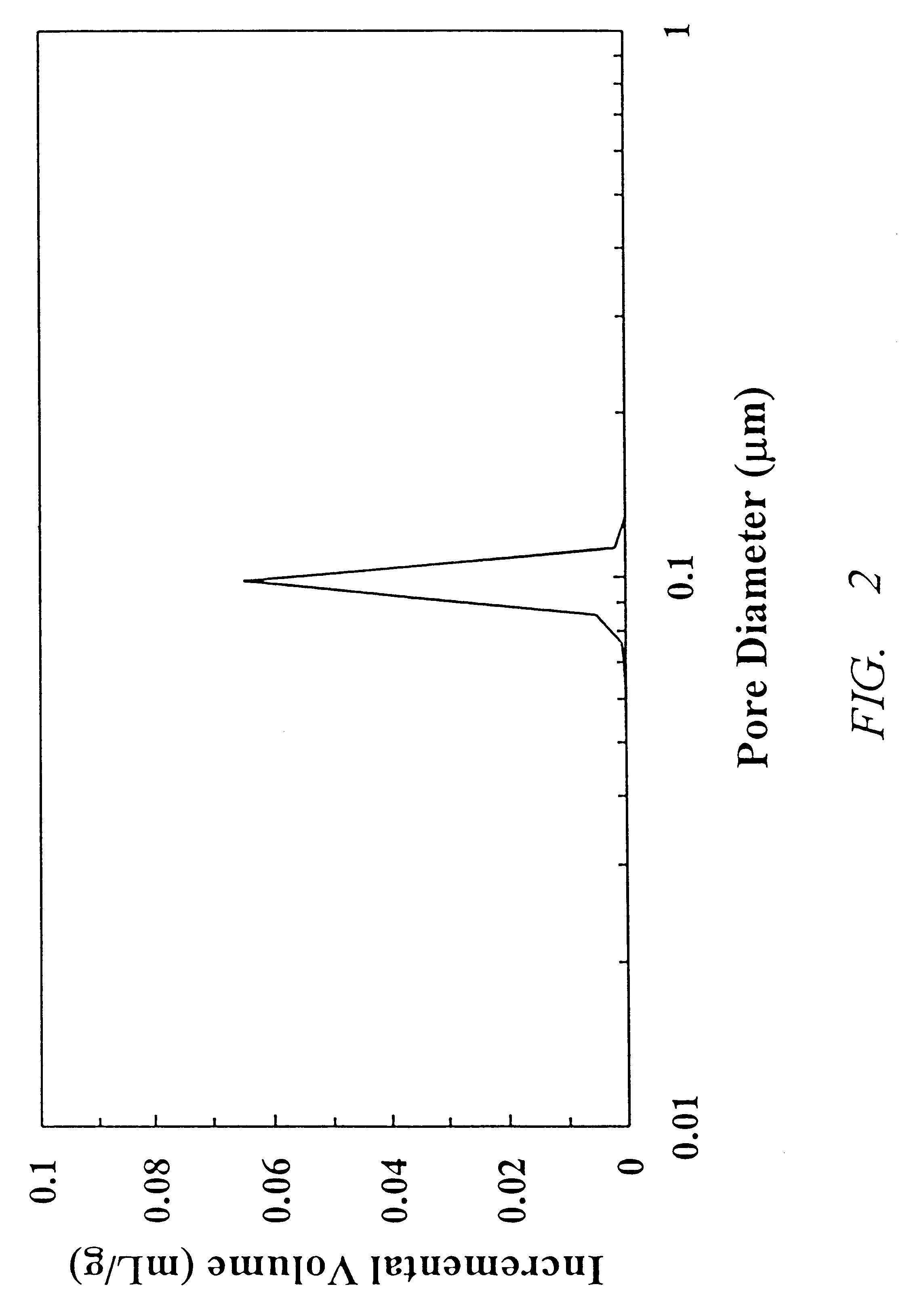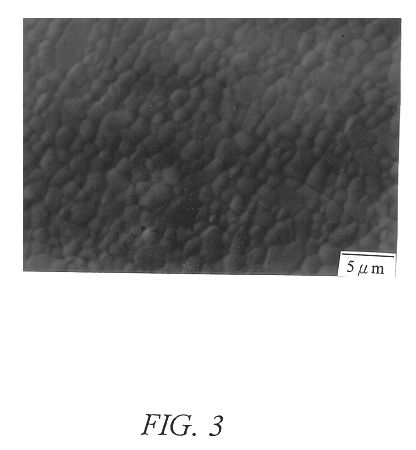Preparation of translucent strontium barium niobate ceramics using reaction sintering
a technology of strontium barium niobate and reaction sintering, which is applied in the direction of niobium compounds, chemistry apparatuses and processes, and vanadium compounds, etc., can solve the problems of high cost of instruments and equipment, large manufacturing procedure complexity, and the shape of single crystals is still subject to limits, etc., to achieve the effect of reducing cost, high density and easy control of microstructur
- Summary
- Abstract
- Description
- Claims
- Application Information
AI Technical Summary
Benefits of technology
Problems solved by technology
Method used
Image
Examples
example 1
Weigh SrCO.sub.3 and Nb.sub.2 O.sub.5 high purity powders of 99.99%, add water, and mix for 24 hours by ball mill. The powders and water weight ratio is 1:2. When the mixed powders are dried, grind into powder and calcine at 950.degree. C. in air for 2 hours to form SrNb.sub.2 O.sub.6. Follow the same procedure above, and weigh BaCO.sub.3 and Nb.sub.2 O.sub.5 high purity powders of 99.99%, add water, and mix for 24 hours by ball mill. The powders and water weight ratio above is 1:2. When dried, grind into powder and calcine at 950.degree. C. in air for 2 hours to form BaNb.sub.2 O.sub.6.
Take appropriate amounts of SrNb.sub.2 O.sub.6 and BaNb.sub.2 O.sub.6, at the ratio of, 0.5 / 0.5 and mix. The mixture shall be dried by microwave rapidly. Grind and use 30 MPa for initial low pressure shaping, and then cold-isostatic press at 200 MPa to obtain high density and uniform compact. Then sintered in oxygen at 15.degree. C. / min to 1300.degree. C. for 0.5 hour, and followed by heat-treated at...
example 2
Follow the procedures as described in Example 1, and take SrCO.sub.3 and BaCO.sub.3, to mix with Nb.sub.2 O.sub.5 mix for 24 hours by ball mill, respectively. When dried, grind into powders and calcine at 950.degree. C. in air for 2 hours to form SrNb.sub.2 O.sub.6 and BaNb.sub.2 O.sub.6, respectively.
Take appropriate amounts of SrNb.sub.2 O.sub.6 and BaNb.sub.2 O.sub.6, at the ratio of 0.5 / 0.5 and mix. The mixture shall be dried by microwave rapidly. Grind and use 30 MPa for initial low pressure shaping, and then cold-isostatic press at 200 Mpa to obtain high density and uniform compact. Then sintered in oxygen at 15.degree. C. / min to 1300.degree. C. for 0.2 hour, followed by heat-treatment at 1275.degree. C. in oxygen for 12 hours in deriving translucent Sr.sub.0.6 Ba.sub.0.4 Nb.sub.2 O.sub.6, respectively.
function example
Observe the microstructure and pore distribution of translucent Sr.sub.0.5 Ba.sub.0.5 Nb.sub.2 O.sub.6 test sheet.
Take the formed SrNb.sub.2 O.sub.6 and BaNb.sub.2 O.sub.6, at the ratio of 0.5 / 0.5 under the Comparison Example, and sinter in oxygen at 15.degree. C. / min to 1225.degree. C. for 0.5 hour. The derived Sr.sub.0.5 Ba.sub.0.5 Nb.sub.2 O.sub.6 retains fine microstructure as shown in FIG. 1. Use SEM to measure pore size and distribution proving that the pore distribution is very uniform as shown in FIG. 2.
Take the formed SrNb.sub.2 O.sub.6 and BaNb.sub.2 O.sub.6, at the ratio of 0.5 / 0.5, and sintered in oxygen at 15.degree. C. / min to 1300.degree. C. for 0.5 hour to achieve the relative density close to the 99% theoretical density. Once the said Sr.sub.0.5 Ba.sub.0.5 Nb.sub.2 O.sub.6 test sheet is polished, then thermal-etched for 0.5 hour at the temperature lower than the sintering temperature by 100.degree. C. Use SEM to observe the microstructure as shown in FIG. 3. Take the...
PUM
| Property | Measurement | Unit |
|---|---|---|
| temperature | aaaaa | aaaaa |
| pressure | aaaaa | aaaaa |
| pressure | aaaaa | aaaaa |
Abstract
Description
Claims
Application Information
 Login to View More
Login to View More - R&D
- Intellectual Property
- Life Sciences
- Materials
- Tech Scout
- Unparalleled Data Quality
- Higher Quality Content
- 60% Fewer Hallucinations
Browse by: Latest US Patents, China's latest patents, Technical Efficacy Thesaurus, Application Domain, Technology Topic, Popular Technical Reports.
© 2025 PatSnap. All rights reserved.Legal|Privacy policy|Modern Slavery Act Transparency Statement|Sitemap|About US| Contact US: help@patsnap.com



